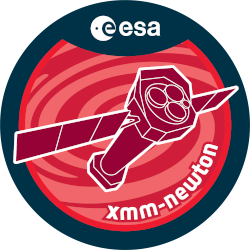

| Proposal ID | 088226 |
| Title | Tracking the long-term flux evolution of an X-ray luminous tidal disruption even |
| Download Data Associated to the proposal | https://nxsa.esac.esa.int/nxsa-sl/servlet/data-action-aio?obsno=0882260101 |
| DOI | https://doi.org/10.57780/esa-ec5y3rh |
| Principal Investigator, PI | Dr Murray Brightman |
| Abstract | We request a 50-ks XMM-Newton observation of an X-ray-luminous tidal disruptionevent during Cycle 20 in order to track its long-term X-ray flux behaviour, andto clarify lingering questions regarding its early flux evolution. The event,which occurred in the galaxy SDSS J143359.16+400636.0 at z=0.099, first detectedin February 2020, reached a peak luminosity of 10^44 erg s 1 in the 0.3-10 keVX-ray band, which was around 20 times more than the peak optical/UV luminosity.Optical, UV, and X-ray lightcurves showed a decline in flux from the sourceconsistent with t^ 5/3. The start time of the X-ray emission is unclear, whichhas implications for the X-ray emission mechanism, but an observation at longtime scales with XMM with clarify this. |
| Publications |
|
| Instrument | EMOS1, EMOS2, EPN, OM, RGS1, RGS2 |
| Temporal Coverage | 2021-07-28T06:09:06Z/2021-07-28T21:20:46Z |
| Version | 19.16_20210326_1200 |
| Mission Description | The European Space Agencys (ESA) X-ray Multi-Mirror Mission (XMM-Newton) was launched by an Ariane 504 on December 10th 1999. XMM-Newton is ESAs second cornerstone of the Horizon 2000 Science Programme. It carries 3 high throughput X-ray telescopes with an unprecedented effective area, and an optical monitor, the first flown on a X-ray observatory. The large collecting area and ability to make long uninterrupted exposures provide highly sensitive observations. Since Earths atmosphere blocks out all X-rays, only a telescope in space can detect and study celestial X-ray sources. The XMM-Newton mission is helping scientists to solve a number of cosmic mysteries, ranging from the enigmatic black holes to the origins of the Universe itself. Observing time on XMM-Newton is being made available to the scientific community, applying for observational periods on a competitive basis. |
| Creator Contact | https://www.cosmos.esa.int/web/xmm-newton/xmm-newton-helpdesk |
| Date Published | 2022-08-31T00:00:00Z |
| Last Update | 2025-08-04 |
| Keywords | "XMM", "XMM-Newton", "xray emission mechanism", "term xray flux", "start time", "galaxy sdss j143359", "peak luminosity", "time scales", "xmm newton", "uv luminosity", "SDSS", "peak optical", "flux evolution", "kev xray band", "xray lightcurves", "xray emission", "term flux evolution" |
| Publisher And Registrant | European Space Agency |
| Credit Guidelines | European Space Agency, Dr Murray Brightman, 2022, 'Tracking the long-term flux evolution of an X-ray luminous tidal disruption even', 19.16_20210326_1200, European Space Agency, https://doi.org/10.57780/esa-ec5y3rh |